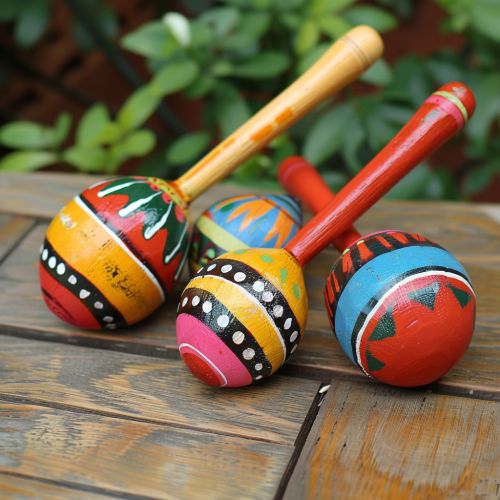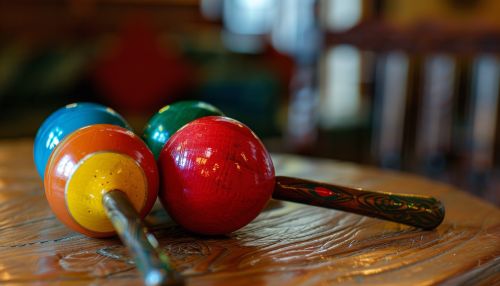Maracas
Introduction


Maracas, also known as rumba shakers, are a type of percussion instrument that are typically played in pairs. They are an integral part of Latin American music and are often used in genres such as salsa, merengue, and cumbia. The instrument consists of a hollow container filled with small objects such as seeds, beads, or pebbles, which produce sound when shaken. Maracas are traditionally made from dried gourds, but modern versions can be made from plastic or wood.
History
The origin of maracas can be traced back to indigenous cultures in the Caribbean and Latin America. The Taino people of Puerto Rico and Cuba are often credited with the creation of the maracas. These instruments were used in various ceremonial and ritualistic contexts. The spread of maracas to other parts of the world occurred through the Columbian Exchange, which facilitated the exchange of goods, ideas, and cultural practices between the Old and New Worlds.
Construction
Maracas are constructed from a variety of materials, each contributing to the instrument's unique sound characteristics. Traditional maracas are made from dried gourds, which are hollowed out and filled with seeds or small stones. The handle is usually made from wood and is attached to the gourd. Modern maracas can be made from plastic or fiberglass, which are more durable and produce a consistent sound.
Materials
- **Gourds**: Traditional maracas are made from dried gourds, which are naturally hollow and lightweight.
- **Wood**: The handles of traditional maracas are often made from wood, which provides a sturdy grip.
- **Plastic**: Modern maracas are frequently made from plastic, which is more durable and less susceptible to damage.
- **Fiberglass**: Some high-end maracas are made from fiberglass, which offers a consistent sound and increased durability.
Playing Technique
Maracas are typically played by shaking them rhythmically to produce a percussive sound. The technique involves holding one maraca in each hand and shaking them in a coordinated manner. The sound produced by maracas can vary depending on the force and speed of the shaking motion. Advanced players can produce complex rhythms and patterns by varying their technique.
Basic Techniques
- **Downstroke**: Shaking the maraca downward to produce a single sound.
- **Upstroke**: Shaking the maraca upward to produce a single sound.
- **Circular Motion**: Moving the maraca in a circular motion to create a continuous sound.
Advanced Techniques
- **Double Stroke**: Producing two sounds in quick succession by shaking the maraca back and forth.
- **Triple Stroke**: Producing three sounds in quick succession by using a combination of downstrokes and upstrokes.
- **Syncopation**: Creating complex rhythms by varying the timing and force of the shaking motion.
Cultural Significance
Maracas hold significant cultural importance in various Latin American countries. They are often used in traditional music and dance forms, and their distinctive sound is instantly recognizable. In Puerto Rico, maracas are a staple in bomba and plena music. In Venezuela, they are used in the traditional music genre known as Joropo. Maracas are also commonly used in religious and ceremonial contexts in various indigenous cultures.
Modern Usage
In contemporary music, maracas are used in a wide range of genres beyond traditional Latin American music. They are frequently used in jazz, pop, and rock to add a unique percussive element. Many modern musicians incorporate maracas into their performances to create a distinctive sound and enhance the rhythmic complexity of their music.
See Also
References
- [Include references here if available]
